C is for Classification
Welcome to the next post in the A to Z Science series here at Inspiration Laboratories. C is for Classification! Classification or sorting activities are great for building science skills with toddlers and preschoolers. In fact, the ideas I’m sharing today really can work with all ages. After giving you a little background on classification, I will share a classification activity along with some questions to ask.
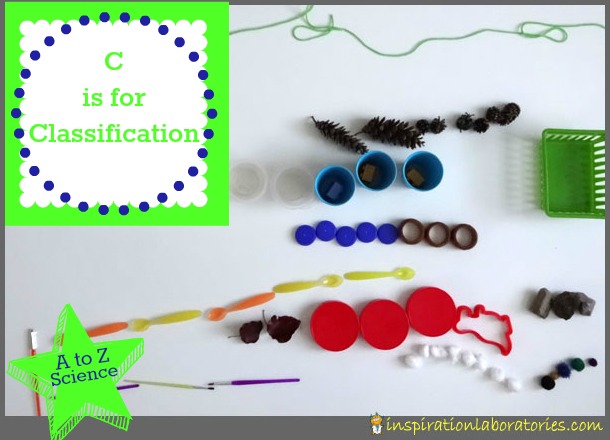
What is Classification?
Classification is an important science and math skill. Classifying refers to organizing things into groups based on similar characteristics. There’s a branch of science that deals with classifying organisms into groups. We call that taxonomy.
Think about how classification is used in everyday life. Do you ever make lists? Do you make several lists – a grocery list, another store shopping list, a to do list inside your house, a to do list for things outside, etc.? That’s a form of classifying. What about organizing things in your home? You group similar things together to make it easier to find. That’s using classifying skills, too.
Grouping things into similar categories makes it easier to study and easier to see patterns. This is done a lot in science. When we organize information into tables or graphs, we are also using classification skills by sorting the information into more readable ways.
Children are Natural Scientists
Somewhere between the ages of 2 and 3, children begin to sort and classify objects. Watch how their play changes. Children will begin to sort objects into groups. Color and shape are common groupings. They may also sort things based on number, size, texture, and hardness. Eventually, they can sort based on other characteristics like mass, odor, sound, taste, and flexibility. By encouraging sorting and classifying, you are helping develop mathematical thinking and science reasoning skills.
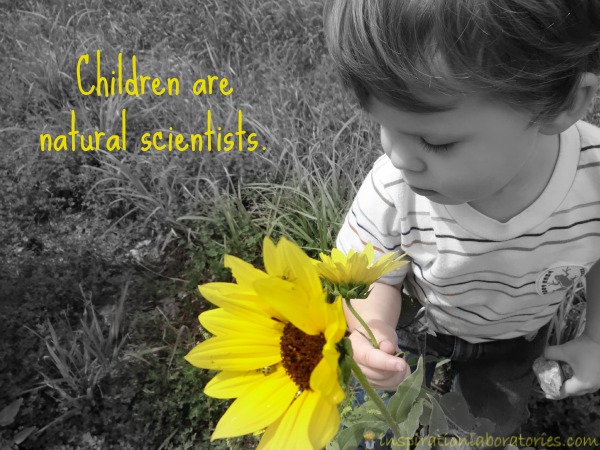
Classification Activity
I’ve noticed my son naturally likes to group objects (he’s almost 3). The first time I really introduced him to the concept of sorting or classification was with leaves and seeds. It took him a minute to understand what I was asking of him, but then he got it and sorted all of our leaves and seeds.
For our second time explicitly working on classification, I chose a bunch of objects from around the house being mindful of features they could share. In fact, I chose several of the exact same object. I placed all of the objects in a basket. I asked Aiden if he wanted to play a game. Of course, he said yes. I placed the basket in front of him and said nothing. I was curious to see what he would do.
He immediately pulled objects from the basket and placed them into rows. Each row had something in common. After he sorted everything from the basket, he asked for more objects. He was entertained by this for quite some time.
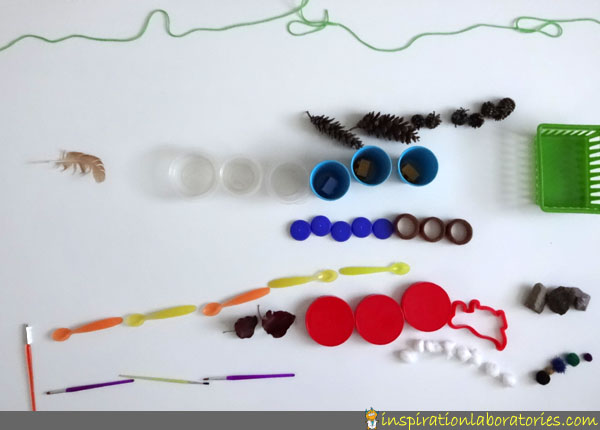
I gave Aiden a completely new set of objects. This time the only obvious way to group the objects was by color. Aiden looked at the objects and just stared at them. He didn’t know how to group them. After some questioning from me, he decided to group them by color. And again, started gathering other things from around the house to add to his groups.
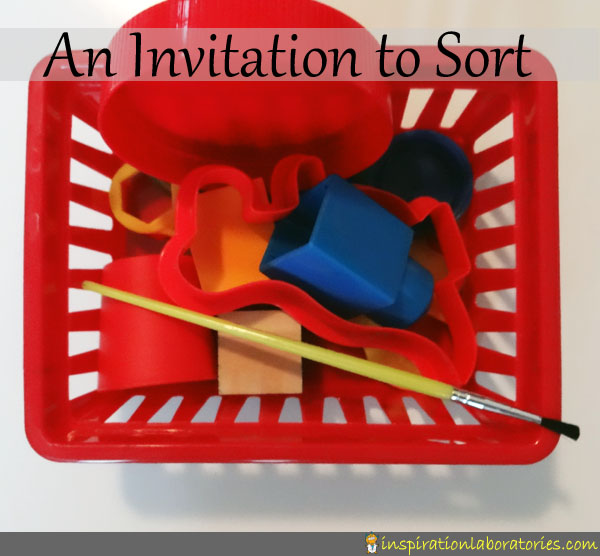
Questions to Ask to Encourage Classification
What do you do if you place the basket of objects in front of your child and he doesn’t start sorting on his own? Ask questions and model what you expect. You can also ask these questions while your child is sorting.
Try asking:
- What do these things have in common?
- How is this similar to this? How is that the same as this?
- Does this look like anything else here?
- Why did you put these things together?
- Tell me about what you are doing.
- Where are you going to put that?
My examples:
I asked Aiden why he placed the milk jug caps next to the napkin rings. He said, “I don’t know.” I asked if it was because they were both circles. He replied, “Yes!”
He placed the little bowls next to the cups “because they are cups.”
He grouped all of the colored pom poms together. He lined up the cotton balls near the pom poms but left a space in between them. I asked if the cotton balls were in the same group as the pom poms. He said, “No, they are not pom poms.”
When Aiden stared blankly at the second basket of objects, I asked him if anything looked similar. Still blank stares. “Does this lid look like anything else in the basket?” He grabbed out the cookie cutter and said, “This!” I asked how they were the same. He said, “They are both red.” We did this with the rest of the objects in the basket and eventually had groups sorted by color.
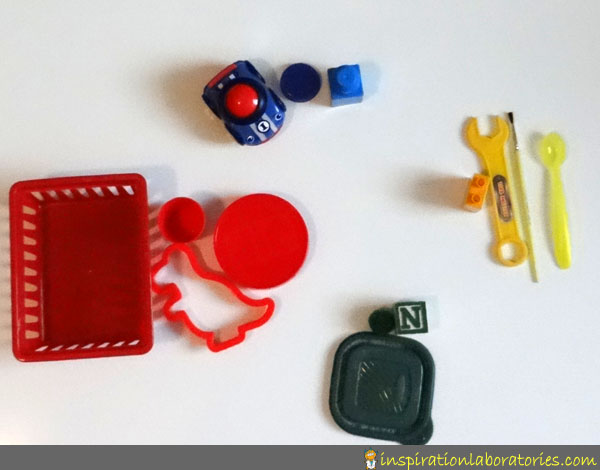
Asking questions gives you an idea of the child’s thought process. This will help you encourage the skill of sorting.
Update January 2019: I’ve added a video to this page showing my toddler, Elon, doing the classification activity. He’s 33 months at the time of the video.
Other Posts about Classification and Sorting
- Sorting Leaves and Seeds – also talks about pre-sorting skills
- Color Practice – Making a Rainbow – sort toys by color to make a room size rainbow
- 30 More Ideas for practicing classification and sorting with kids
Do your children like to sort and organize objects?
More Science for Toddlers and Preschoolers
The A to Z Science for Toddlers and Preschoolers is an introduction to science for ages 2 to 5. This ebook includes one science activity for each letter of the alphabet. From apples to zoo, these experiments and explorations are sure to be a hit. (Classification is the letter C.)
Each of the 26 science ideas includes a materials list, instructions for the activity, questions to ask, and the science behind it. Variations and modifications for different ages are provided when possible.

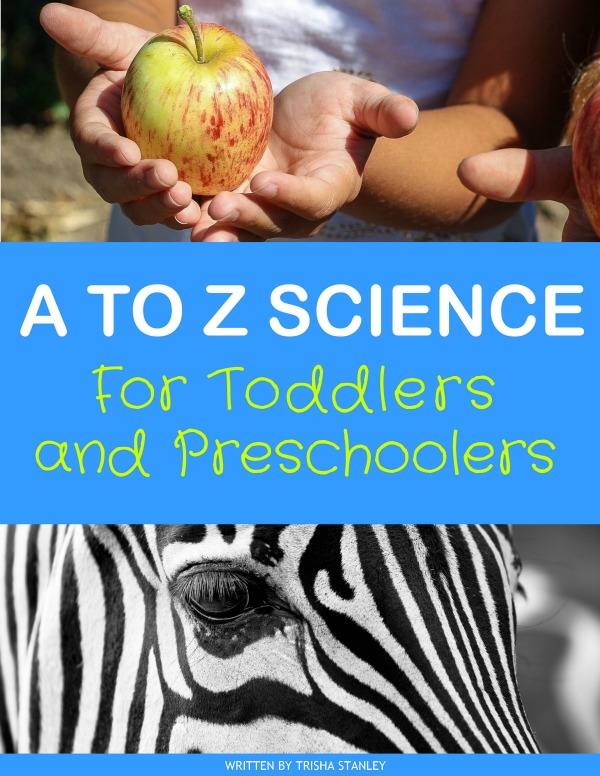
Leave a Reply